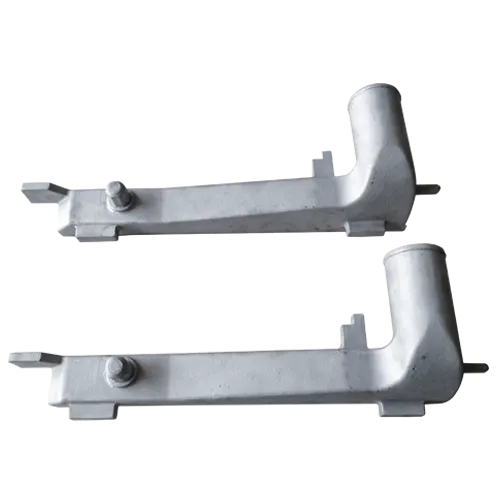Mobile:+86-311-808-126-83
Email:info@ydcastings.com
Vertical Impeller Design and Its Impact on Fluid Dynamics Performance
Understanding Vertical Impellers A Comprehensive Guide
Vertical impellers are a specialized type of impeller used in various fluid dynamics applications, particularly within mixing, pumping, and aeration processes. Their unique design allows for efficient movement of liquids in a vertical orientation, making them indispensable in numerous industries, including chemical, pharmaceutical, and wastewater treatment.
What is a Vertical Impeller?
An impeller, in general, is a rotating component of a pump or mixer designed to enhance the flow and movement of fluids. Vertical impellers are specifically oriented to facilitate vertical fluid flow, which is often required in processes like liquid transfer, emulsification, and blending. Unlike horizontal impellers that push fluids sideways, vertical impellers pull liquids downwards or push them upwards, depending on their design and orientation.
Design and Functionality
Vertical impellers come in various designs, including open, semi-open, and closed configurations. The choice of design largely depends on the application requirements, such as the type of fluid being handled and the desired mixing characteristics.
1. Open Impellers These have no shrouds and facilitate easy flow of fluids. They are suitable for handling fluids with suspended solids, as they can continuously pass larger particles without clogging.
2. Semi-Open Impellers A hybrid of the open and closed types, semi-open impellers provide some protection to the blades while still allowing a reasonable flow of fluids with moderate solids content.
3. Closed Impellers These have shrouds on both the front and back of the blades, providing higher efficiency and better performance for clear liquids. They create a more controlled flow but are not ideal for fluids containing significant solids.
The performance of a vertical impeller is significantly affected by its geometry, including blade shape, size, and the number of blades. The velocity, turbulence, and mixing patterns produced by the impeller are critical factors in achieving optimal results.
Applications of Vertical Impellers
Vertical impellers serve a multitude of applications across various industries
vertical impeller

- Chemical Processing In the chemical industry, vertical impellers are used for mixing reactants, ensuring a homogeneous mixture, and enhancing reaction rates
. Their ability to keep solids in suspension is vital in processes that involve chemical reactions with solid catalysts.- Wastewater Treatment In wastewater treatment plants, vertical impellers are often employed in aeration tanks where mixing and oxygen transfer are essential for microbial digestion of organic materials. They ensure uniform distribution of air throughout the tank, promoting efficient treatment.
- Food and Beverage Industry The food industry utilizes vertical impellers for processes such as homogenizing emulsions, blending ingredients, and creating consistent textures in products like sauces or dressings.
- Pharmaceuticals In pharmaceutical manufacturing, vertical impellers are crucial for mixing powders with liquids, ensuring uniformity and stability in the formulation of drugs.
Advantages of Vertical Impellers
1. Space-saving Design Vertical impellers require less floor space compared to horizontal mixers and pumps, making them ideal for facilities with limited space.
2. Efficiency in Handling Viscous Fluids Their design allows for effective mixing and pumping of viscous fluids that may be challenging for horizontal impellers to handle.
3. Reduced Risk of Settling By continuously stirring the fluid, vertical impellers minimize the risk of sedimentation, ensuring a consistent product quality.
4. Adaptability They can be used in various applications and are easily adjustable in terms of speed and power, allowing for optimized performance based on specific operational needs.
Conclusion
In conclusion, vertical impellers are a vital component in a range of industrial applications, characterized by their capability to handle various fluid types and mixing requirements. Their unique design allows for efficient operation in vertical setups, enabling effective mixing, aeration, and pumping of liquids. As industries continue to evolve, the demand for efficient and versatile mixing technologies will likely drive innovations in vertical impeller design, ensuring their continued relevance in the future. Understanding the nuances of vertical impellers is essential for optimizing their application and achieving desired operational outcomes in various fluid handling processes.
-
Impeller Technology That Powers Precision in Pump SystemsNewsMay.22,2025
-
Valve Durability Begins with Quality Cast Iron ComponentsNewsMay.22,2025
-
Performance Cooling with Advanced Automobile Water Pump SolutionsNewsMay.22,2025
-
How Motor Housing and Oil Pans Shape Engine PerformanceNewsMay.22,2025
-
How Metal Castings Drive Modern Manufacturing EfficiencyNewsMay.22,2025
-
Exploring the Engineering Behind Valve Body CastingsNewsMay.22,2025











